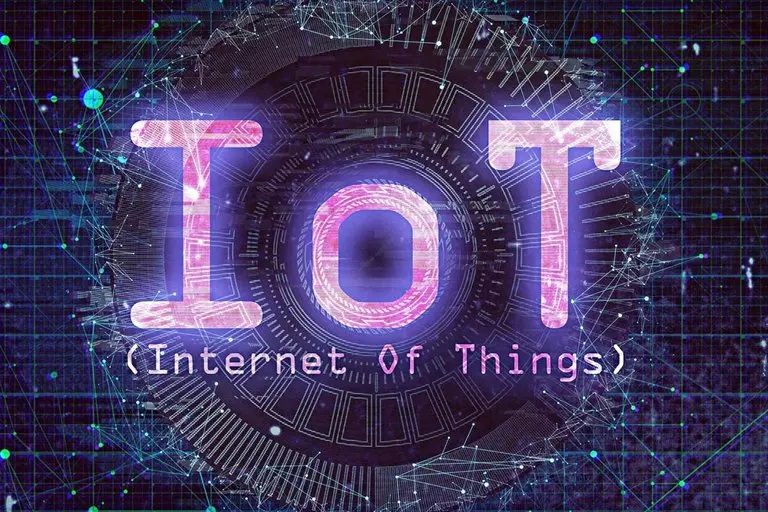Internet Of Things; A Dramatic Change In Technology Or The End Of Everything?
By The End Of 2021, The Number Of Internet Of Things Devices Will Reach 46 Billion; But The Question Remains, Will This Phenomenon Make The World A Better Place Or Mark The End Of The Age Of Technology?
Cybersecurity expert Bruce Schneier praised the Internet of Things at the European Information Security Conference in London:
The Internet now thinks, feels, and acts, and I think that is the definition of a robot. In my opinion, the correct definition of the Internet of Things in general is that we are building a robot the size of the whole world without realizing it.
To this cybersecurity expert, the Internet of Things is exactly like a robot; But with the difference that this robot is present on a global scale instead of being limited to its metal enclosure, its control systems and processors are scattered around the world and are built and controlled by organizations with different goals and ideas.
The idea of a giant robot as big as the whole world, each part of which is controlled by a different organization, is undoubtedly frightening and apocalyptic; But is it really necessary to be afraid of the Internet of Things?
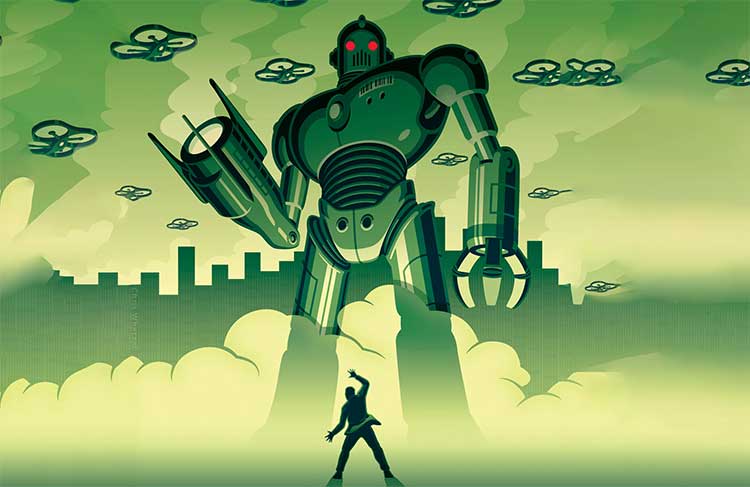
What is the Internet of Things?
The Internet of Things (IoT) is the billions of physical devices around the world that are connected to the Internet and collect information and share it with the user and other connected devices.
Almost anything that can connect to the Internet is part of the Internet of Things. In the smart home, these Internet-enabled gadgets free us from the chores of the home, give us back some of our precious time, and add a more exciting color and glaze to our every day, gray lives.
But the Internet of Things is more than just heating the oven with sound or turning off the lights with a smartphone. The main purpose of the Internet of Things is to put computers in direct contact with the physical environment around us by installing a sensor on anything in the world and translating it into digital language.
In other words, if in virtual reality we are humans stepping into the digital world of computers, in the Internet of Things it is the digital world that enters our physical world.
In the Internet of Things, the digital world enters our physical world
Internet-connected devices can be a way of predicting everything from consumer behavior to weather events, But these devices also make it easier for hackers to access people’s private space to steal and reveal their personal information. Depending on who you ask, the Internet of Things is set to revolutionize the future of technology or mark the end of the age of human technology like a giant robot.
IoT History
The Internet of Things has an interesting origin story. Perhaps the first example of what could really be called the Internet of Things was the vending machine containing Coca-Cola cans, which was housed at Carnegie Mellon University in Pittsburgh, Pennsylvania in the 1980s, more than ten years before the Internet of Things was named.
Had. David Nichols, a student at the university, was tired and frustrated that he had to walk a long way from his office to the refrigerator to buy a drink, and often when he got to the refrigerator, there was no soda. Or it was quite hot.
Nichols’ mind was long engrossed in the story when he suddenly remembered the first computer-controlled vending machine at Stanford University and realized that the technology he was looking for to solve his Coca-Cola refrigerator problem already existed…
A few days later, Nichols and a few of his friends designed a system to connect to the vending machine via ARPANET (today’s Internet forerunner) that could remotely check the refrigerator’s inventory status (for example, to see if there was a drink in the refrigerator. Or a cool drink).
To many, this vending machine was the first real IoT device.
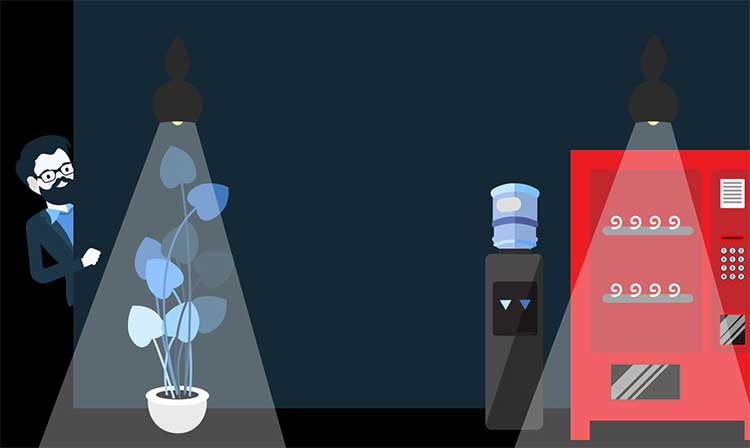
But it wasn’t until 1999 that the name “Internet of Things” was coined by Kevin Ashton, co-founder of the Auto-ID Labs research group at MIT.
Ashton was in charge of launching the cosmetics line at Procter & Gamble at the time. Every time she went to the local cosmetics store, she noticed that brown lipstick could not be found on the shelves. Supply chain officials told him the blush was in stock; But Ashton needed to know exactly where these lipsticks were, what was happening to them, and why the shop could not have enough of them; But no one knew the answers to these questions.
RFID tags were developed around the same time.
These tags had tiny chips that could transmit very small amounts of data wirelessly with the help of radio waves. When Ashton spoke to Procter & Gamble about the Internet of Things, he suggested that the tags be used for the company’s products so that goods could be easily identified and tracked throughout the supply chain.
In those days, the word “Internet” had just hit the tongues, and everyone was excited to hear it. Ashton also took the opportunity to use the word “Internet” in the title of his speech to attract the attention of company executives.
In an interview with ZDNet, Ashton described the Internet of Things as:
The Internet of Things connects the interconnectedness of human culture, that is, our objects, with the interconnectedness of our digital information system, the Internet. The Internet of Things means this.
After the crucial IoT speech for Procter & Gamble, Ashton gave hundreds of lectures to executives in various organizations about the use of RFID technology, with particular emphasis on the RFID chip’s ability to communicate with devices over a wireless network. As of 2003, the company Ashton founded had 103 sponsors and several branches around the world, and its commitment to RFID standards helped any smart package connect to supplier and retailer networks.
Over time, the smart goods market expanded, more investment was made, and chips became better and cheaper.
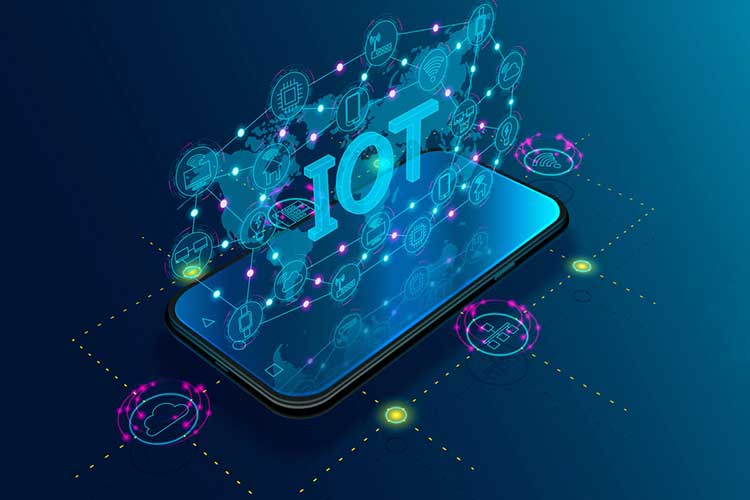
In the late 2000s and early 2010s, companies around the world were as excited about the Internet of Things as they are now about artificial intelligence and machine learning.
At the same time, IBM began working on the Smarter Planet campaign with the goal of economic growth and sustainable development. McKinsey, the world’s most respected management consulting firm, began writing reports on the state of the Internet of Things technology. Cisco, the largest network equipment company, announced in 2011 that the Internet of Things was “born” between 2008 and 2009; That is when the number of devices connected to the Internet exceeded the number of people living on the planet.
In the same year, Gartner, an American research firm, first added this new phenomenon to its list of emerging technologies.
Shortly afterward, IoT startups popped up. In 2010, Nest Labs started producing a thermostat and a smart smoke detector equipped with a sensor and Wi-Fi with learning capabilities.
In 2014, Google bought the startup for $ 3.2 billion, and it could be said that this was the moment when the Internet of Things caught the public’s attention. With the advent of Alexa and Google Home smart voice assistants, the presence of IoT devices in people’s homes has become more and more commonplace.
By the end of 2021, the number of IoT devices will reach 46 billion, an increase of 200% compared to 2016.
IoT application
Almost all physical objects can become IoT devices, provided they have the ability to connect to the Internet to be controlled or exchange information with the user and other devices.
In the field of IoT, you have probably heard the name of the smart refrigerator a lot; So let’s explain one of the most interesting uses of the Internet of Things with smart refrigerators.
Suppose you are returning from work. Your car is connected to your smartphone and this phone is connected to your refrigerator at home. At this point, the refrigerator sends a message to your phone notifying you that the tap is running out.
This message will be displayed on the dashboard of your connected car and will show you the nearest supermarket on the map to buy milk. The shelves of the supermarket are also connected and now on the car dashboard, you will see the message that the supermarket has your favorite milk brand.
The Internet of Things means this.
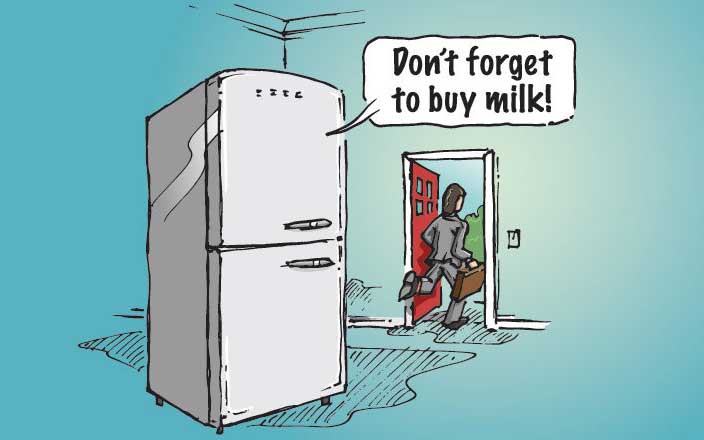
The use of the Internet of Things in the workplace includes inventory tracking systems to let you know whenever you have a shortage of products and to order new products automatically. Another example of the Internet of Things in the workplace is smart desks that warn employees who have been sitting in a chair for a long time to get up.
Smart speakers for the workplace, such as Alexa for Business, enable employees to turn on videoconferencing equipment, review a calendar, set a meeting time, and find an empty conference room with just their voices.
In industries such as manufacturing, IoT sensors in machinery, equipment, production lines, warehouses, and vehicles can transmit the collected data in the form of instant maintenance reports so that if a device fails or needs to be replaced, the organization Be informed immediately.
With such an advanced system, the defective part is immediately identified so that engineers can make the necessary repairs on it before any malfunction occurs.
IoT tags and sensors are also very useful in the supply chain.
From the factory to the truck to the warehouse to the shop, the Internet of Things can provide organizations with a centralized, unified picture of the exact location of all products, how they are produced, how quickly they are transported, and how quickly they are sold.
In the healthcare sector, everything from swallowing sensors to connected inhalers and contact lenses has now become part of the Internet of Things, informing patients and health professionals about what’s going on inside the body, the state of health, and how to take medication.
From a simpler perspective, the Internet of Things can be viewed as a light bulb that turns on and off with a smartphone; Adjusts to their liking; A smart toy that connects wirelessly to an online database and responds to children’s questions and requests with audio and video recognition.
On a larger scale, the Internet of Things can be found in a jet engine equipped with thousands of sensors for data collection and transmission.
On an even larger scale, smart city projects are covering all parts of the city with sensors to increase human perception and control over their surroundings.
How the IoT works
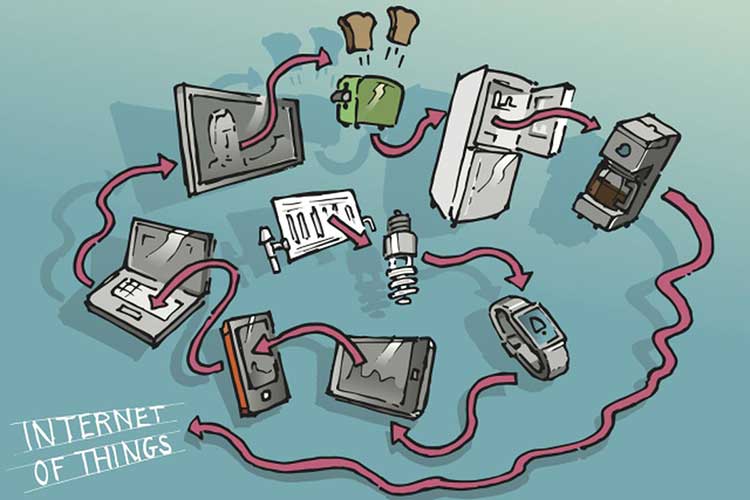
It can be said that the use of the Internet of Things in all industries is endless, and this technology undoubtedly has much more potential than the smart refrigerator. But how does the Internet of Things work and what are the main components of this system?
For the IoT, the first things you need are sensors and devices capable of collecting, storing, transmitting, and receiving data. The next component is the connection; The collected data must be exchanged between different devices and in fact communicated between them; The factor that makes this connection possible is the Internet.
Typically, IoT sensors and devices communicate with applications and services that are in the cloud, and if this is not achieved through the public Internet, depending on the cloud model, it is through the private Internet.
The next step is data processing.
After the collected data is transferred from the device to the cloud, the installed software starts analyzing them. For example, data transmitted from a smart home air conditioner is analyzed to make sure the temperature is within acceptable limits.
But the true value and benefits of the Internet of Things lie in industrial systems and applications; Because in this section, a very significant number of devices with the ability to collect and transfer data, provide vital and instant information about the state of the business.
The dangers of the Internet of Things
The Internet of Things offered all the benefits of the Internet through devices such as lamps and thermostats; But at the same time, it brought with it all the problems of the Internet.
Now that speakers, televisions, refrigerators, alarm clocks, toothbrushes, light bulbs, alarm clocks, pacemakers, and CCTV cameras are connected to Wi-Fi, almost every device in the home is vulnerable to cyber-attack and may even crash completely.

If the Internet is down, the connected device will also fail. If you have a router problem, you can no longer use your smart heating system or even open your smart home.
Many of these devices run on software that, if the manufacturer goes bankrupt or does not update the software, your smart gadget may become a useless piece of plastic.
These, in addition to exposing devices to the Internet, expose them and any other device connected to your Wi-Fi network to cyber-attacks. In The Internet of Things, Lara Denardis calls this threat to cybersecurity the greatest human rights issue of our time.
The risk of IoT devices being hacked is not just a joke by a few people to mess around with a smart washing machine or hack into a Google camera to send a message to subscribe to a YouTube channel (it really happened); Instead, think of these as actions that you must take regularly so that strangers can easily enter your home. If several thousand smart water heaters are hacked at the same time, the whole city may be cut off from electricity.
A single vulnerable device is sufficient to compromise the security of the entire network.
The threat to Internet-connected devices is not only because they are connected to the Internet, but also because security issues have not always been a priority for manufacturers in the production of these products.
In 2016, for example, malware called Mirai infiltrated more than 600,000 vulnerable IoT devices to launch a massive DDoS attack. The following year, a cyberattack called Krack infected almost every device connected to the Internet.
This attack was quite crippling and very difficult to defend; Because the Internet of Things is present in many different operating systems. When a virus attacks a smartphone or computer, software developers quickly release a security patch to deal with it; But devices such as routers or smart door alarms usually do not receive the software updates needed to protect against vulnerabilities.
According to Schneier, the advent of the IoT network will eventually lead to the formation of a giant, Internet-connected robot on a global scale that is so diverse and insecure that cyber-attacks can cause serious problems in society if rules are not set.
“When everything becomes a computer, computer security becomes the security of everything,” he believes.
Another danger of the Internet of Things is privacy. Consider the smart home: It knows when you wake up (when the smart coffee maker turns on), how you brush (thanks to the smart toothbrush), what radio wave you listen to (thanks to the smart speaker), what kind of food you eat.
(Thanks to the stove or refrigerator), what do your children think (thanks to smart toys) and who is coming or going through your house (thanks to the smart alarm).
While companies make money selling smart devices in the first place, their IoT business model probably includes selling at least some of the data collected from their customers.
Every device on the Internet of Things collects data, and all that data is valuable.
In the study in 2019, researchers found that 72 of 81 surveyed IoT devices, your data with a company unrelated to the original manufacturer shared device. This means that the most accurate details of your personal life can be packaged and sold to someone else.
Google and Apple both admitted in 2019 that voices recorded by their smart speakers would be monitored by contractors. Amazon works with more than 400 police departments that use images captured by its smart alarm camera to monitor the neighborhood.
The future of the Internet of Things
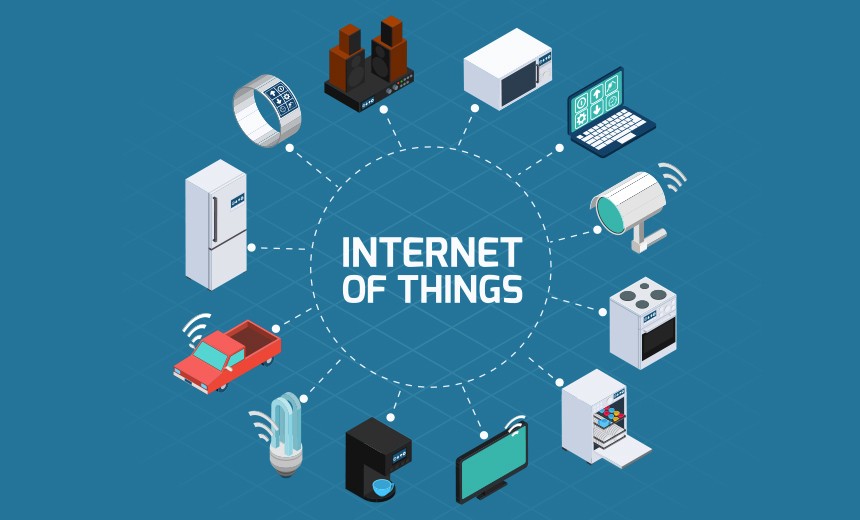
As the price of sensors and Internet communications continues to fall, it will become more cost-effective to add more devices to the Internet of Things. Most IoT companies are currently in the testing phase, as the technology needed for their projects, including sensor technology, 5G Internet, and machine learning-based analytics tools, is still in its infancy.
The competition between different platforms, vendors and software companies, and network operators to gain more market share in the IoT market is fierce and it is not yet clear which of them will win; But without the necessary standards and protocols, we will probably see major security disasters in the field of IoT in the next few years.
As the number of connected devices increases, our living and working environment is filled with smart products.
Some people will welcome the new era of smart objects with open arms; While others will miss the days when the chair was just a chair and had no other use.
IoT over time
| Year | Event |
|---|---|
| 1980 | David Nichols builds the first IoT device: the Coca-Cola vending machine. |
| 1999 | Kevin Ashton coined the term “Internet of Things” to describe the eyes and ears of a computer. |
| 2000 | LG introduces its first connected refrigerator for $ 20,000. |
| 2008 | The world’s first IoT conference is being held in Zurich, Switzerland. |
| 2010 | Tony Fadel founded Nest Smart Thermostat. |
| 2013 | The Oxford Dictionary adds the term “Internet of Things”. |
| 2014 | Amazon introduces Echo Speaker with Alexa Voice Assistant; The number of IoT devices also exceeds the population of the world. |
| 2016 | Mirai Botnet infects more than 600,000 IoT devices with malware. |
| 2020 | The number of devices connected to the Internet exceeds 20 billion devices. |
| 2021 | The number of connected devices will reach 46 billion. |
| 2022 | Google Home will have the largest share of the IoT device market with 48%. |
| 2023 | IoT users will reach 1.3 billion thanks to the development of 5G technology. |
***
User Prediction of the future Internet of Things is? A dramatic change or the end of the technology age?












